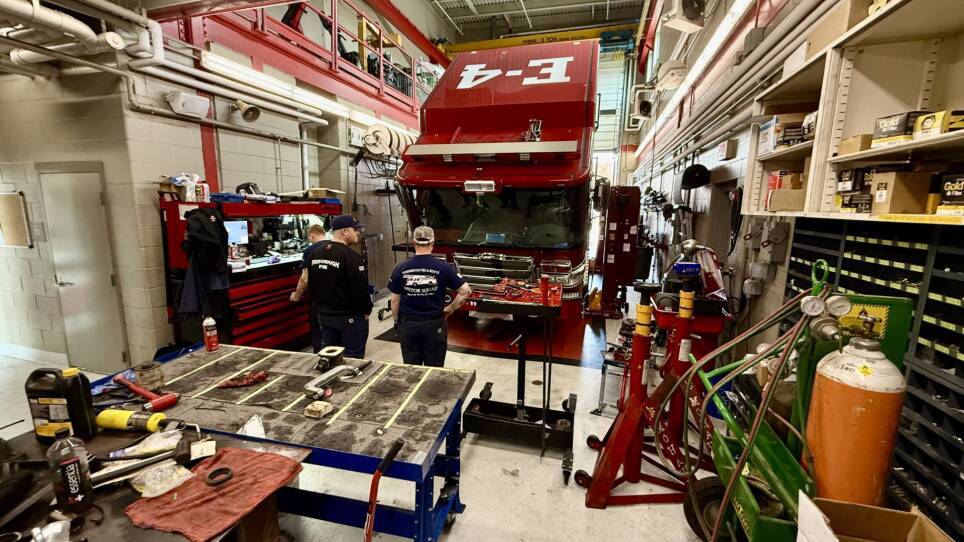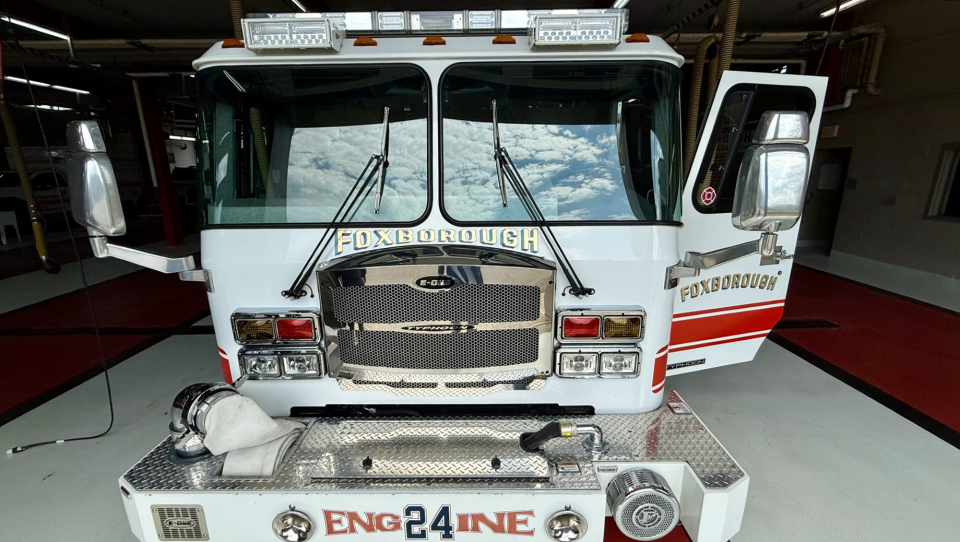In 2020, when the Foxborough Fire Department wanted to purchase an engine pumper truck, they found a vendor and agreed to pay $625,000 for it to be delivered within 18 months.
The department’s Motor Squad Superintendent Eoin Bohnert says, this past fiscal year, they bought the same kind of truck with the same specifications. This time, it cost them more than a million dollars — and they don’t expect it see it for four years.
Bohnert and fire chiefs from across the state think industry consolidation is to blame.
“I think that you’re at a point now where there’s multiple [fire truck] brands, but most of them are owned by the same company,” he told GBH News.
Cambridge Fire Chief Tom Cahill is seeing the same delays and soaring prices. “It makes it very, very difficult to plan ahead,” he told GBH News. “It was a lot easier knowing that every year we can order and I’d get it a year later. Now we’re really thinking three to four years down the road.”
Bohnert said his department had to buy a used ambulance to offset a delivery delay. Their local need was exacerbated by longer runs to hospitals after Norwood Hospital closed due to flooding in 2020.
“We just had our trucks running all day and all night. We were putting 100,000 miles a year on an ambulance,” Bohnert explained.
A spokesperson for REV Group, one of the nation’s largest fire truck manufacturers, told GBH News that demand for emergency vehicles has surged in the last couple years — and that they’ve bumped up their output significantly, too.
“We are proud to support America’s first responders and committed to delivering the quality vehicles they need to do their jobs safely and effectively,” the spokesperson wrote.
Oshkosh Corporation owns another major fire truck manufacturer, Pierce Manufacturing, and also cited high demand. It pointed to supply challenges and inflation, too.
“We are honored to do our part in supporting the brave men and women of the fire service across the country,” Oshkosh spokesperson Tim Gilman wrote. “We continue to work to address this surge in demand with investments in manufacturing, including capacity, technology, and process improvements.”

Fire Chiefs Association of Massachusetts President Mike Kelleher believes the delays and rising prices of trucks stem from private equity firms buying up the fire truck manufacturers and industry consolidation.
“You started seeing a trend where there were fewer companies that were operating independently and competing,” said Kelleher, who’s also the fire chief in Foxborough. “You used to do capital planning and you could have an ambulance in 12 to 18 months — and now it’s three to four years.”
This issue has caught the attention of the Senate in recent weeks. Earlier this month, two senators — U.S. Sens. Andy Kim, a Democrat from New Jersey, and Sen. Josh Hawley, a Republican from Missouri — sent a letter demanding information from some the nation’s top fire truck manufacturers.
Last week, U.S. Sens. Elizabeth Warren, a Democrat from Massachusetts, and Republican Jim Banks from Indiana opened a bipartisan investigation into the issue. The lawmakers sent a letter to the International Association of Fire Fighters, one of the largest and most influential labor unions in North America, to find out more about delays, rising costs and the safety risks those can pose.
The senators say that large fire truck manufacturers are “exploiting” their hold on the market to jack up prices.
“When we don’t take care of our firefighters, we make it harder for our firefighters to take care of their communities,” Warren wrote in an email to GBH News on Thursday. “I’m fighting back against the private equity firms that are putting lives at risk by raising costs, closing manufacturing plants, and making our communities wait longer for these trucks.”
In the meantime, Kelleher says, statewide fire companies are finding ways to extend the life of their vehicles and be creative while waiting for new trucks to be delivered.
Cambridge is maintaining two spare engines and one spare ladder truck.
“So we’re always able to fall back on something if anything were to happen,” said Cahill. But he points out they were in a position to do that because they also operate and budget for a fire training academy.
In the end, the chief says, more options will help everyone’s bottom line.
“I’d love to see more companies, I think the more the better would make it more competitive and keep the pricing competitive,” Cahill said.

Bohnert says Foxborough has a fully operational maintenance garage for its fire department fleets to provide their own repair and maintenance service.
“Which has drastically reduced our out-of-service events and trucks breaking down,” he said.
He says the department also provides similar service to 18 other communities in the region.
“It allows our partner communities to stretch their maintenance budgets and increases their ability to respond on time, save lives, save property, and it just works for everybody,” Bohnert said.





